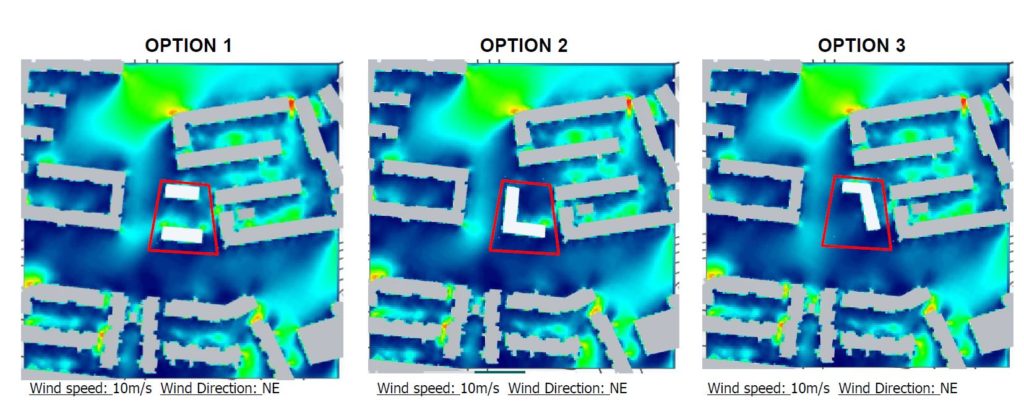This blog post summarizes what I learned during the environmental analysis seminar. The relation between climate and architecture, especially in Singapore, the city where I live, and I used it for my case studio.
My first take was to learn of the existence of the Köppen Climate Classification, in which Singapore falls into the category of a tropical rainforest climate, having very uniform weather throughout the year divided into 2 Monson seasons.

Singapore has a similar temperature throughout the year. The daily temperature at night is between 23-25ºC, and during the day, above 31-33ºC. However, the main variations occur during the day, with more frequent rainfall in the afternoons when solar heating is the strongest. The same happens with the relative humidity; the main variations are during the day, varying from more than 90% in the morning just before sunrise to around 60% in the mid-afternoon on days when there is no rain. During prolonged periods of rain can reach 100. While there is no distinct wet or dry season in Singapore, higher rainfalls happened during the beginning of the Northeast Monson (November to January).

Because of its proximity to the equator, the number of sun hours is relatively constant all year. November and December have the lowest values due to the rain period.
From the images below from my case studio, we can appreciate that the sun’s path is vertical during the day; from March to September, the sun is on the north side, while from September to March is on the South Side. That makes North and South orientation preferable, avoiding the direct sun during the day.
On the other hand, the east and west are less optimal; they receive direct sun during the morning and afternoon. West-facing is the least preferable. It gets the direct afternoon sun all year, making it the warmest side.
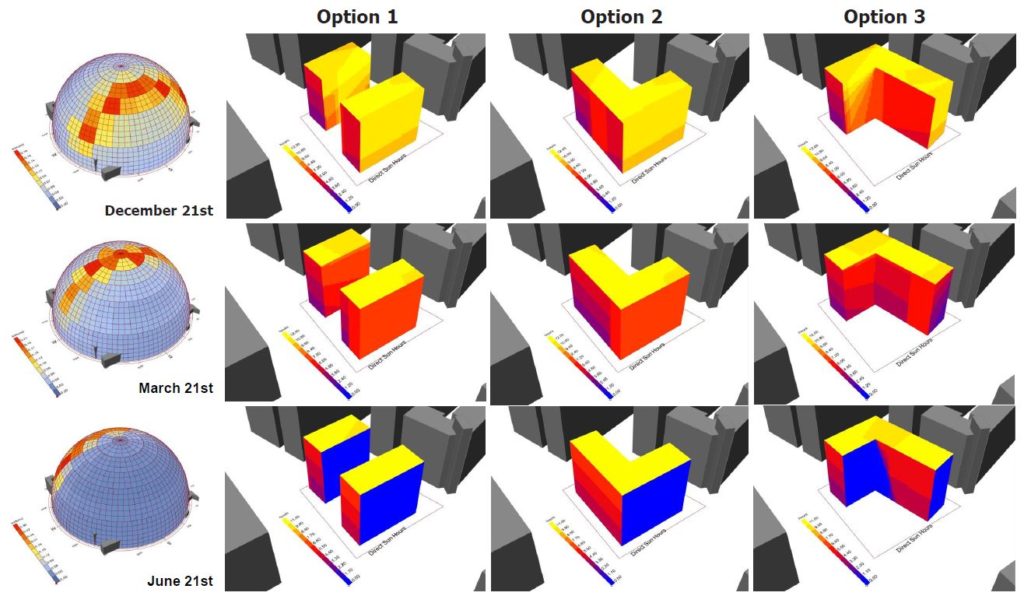
The psychrometric chart in Singapore is relatively constant throughout the year, improving a bit during the rainy period of the Northeast Monsoon.
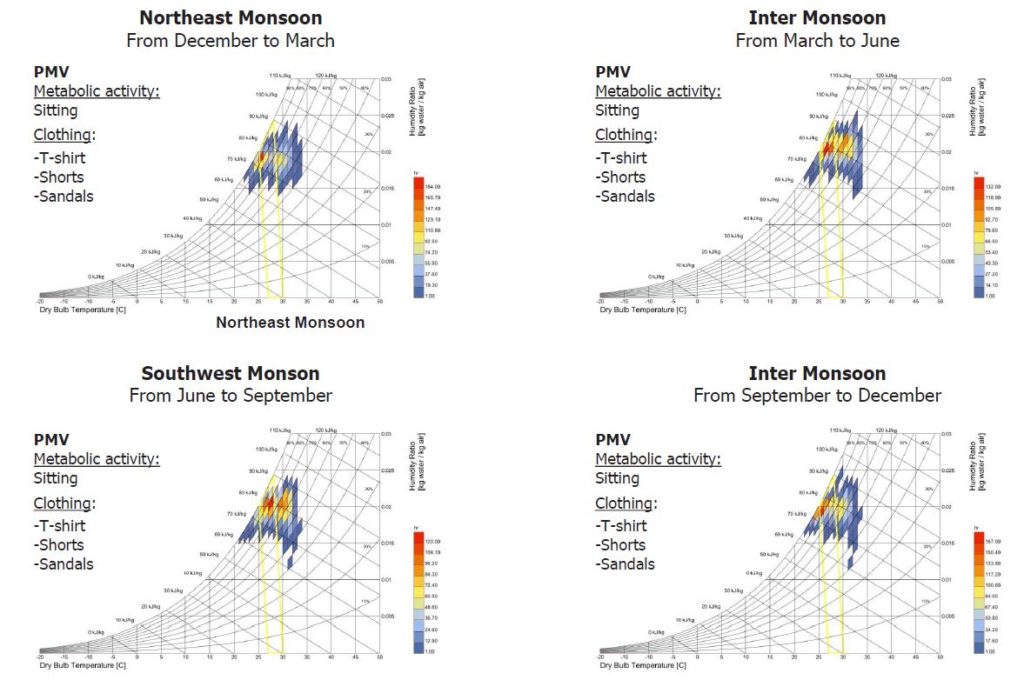
As expected, after analyzing the outdoor thermal comfort (UTCI), the most exposed parts with no shading are the warmest. Planting trees and introducing a softscape finish will improve thermal comfort.

Understanding that the daylight factor is an indicator that doesn’t consider the orientation or location, I will use it to help me decide what type of opening works better for my design. In this case, horizontal windows on the north and south facades and vertical windows on the east and west sides.
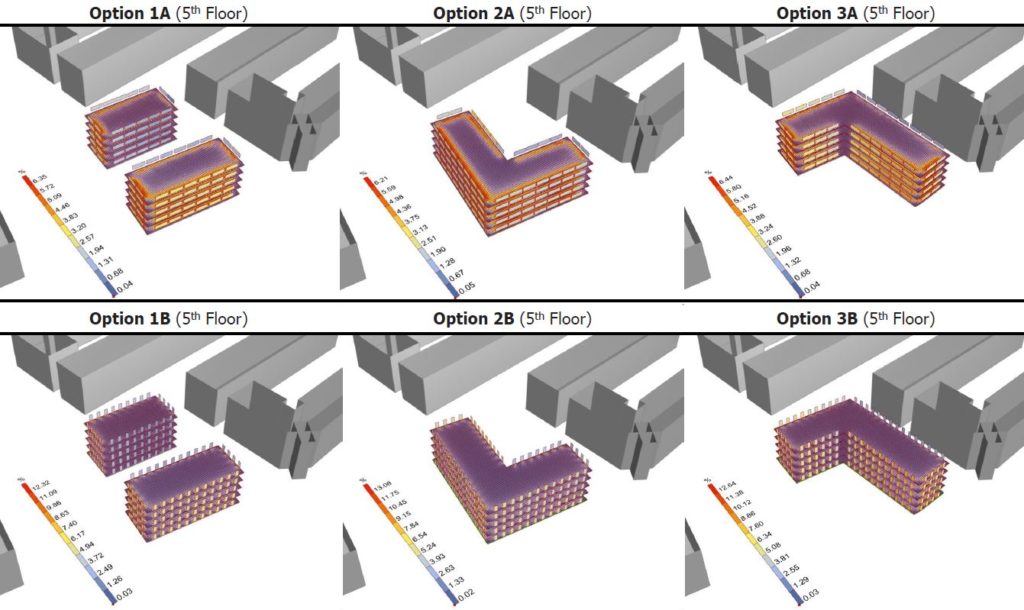
The prevailing wind depends on the time of year. As the monsoon season’s name indicates, the strongest wind comes from the northeast and changes to the south during the southwest monsoon season. In the other parts of the year, the wind is lighter, and the direction is more variable. In the case of Singapore, the same as the solar analysis conclusion, the best orientation in terms of wind would be north and south. The wind is not too strong and can be used for cross ventilation to improve the climate to cool the tropical heat.
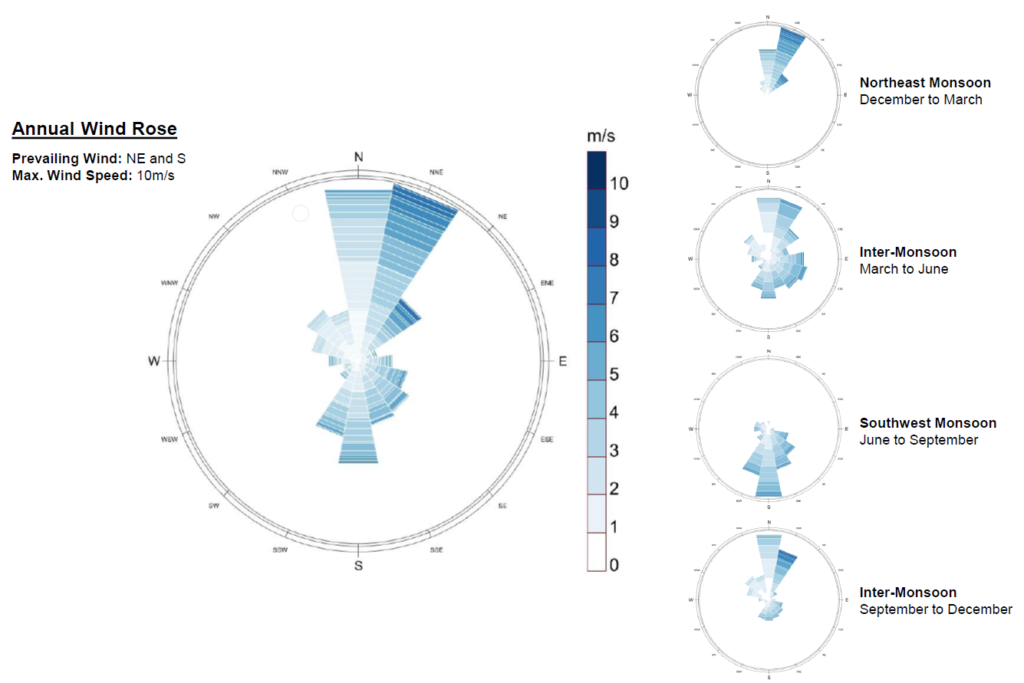
The wind simulation in infrared of the case studio shows how option 1 improves the building cross-ventilation.
